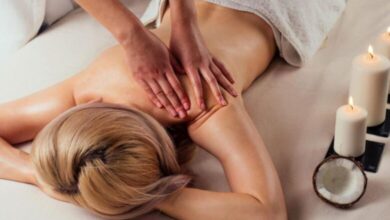Treatment to bone spurs by an orthopedic surgeon in Lahore

Musculoskeletal concerns are incalculable where excessive bone degeneration is a threat, undue build could also be disastrous. In a simple language known as bone spurs, the projection of bony matter around joints is termed osteophytes. It sprouts gradually from damaged joints, especially over an arthritic joint. Bone spurs don’t get better on their own and are tough to diagnose unless certain symptoms like pain or irritation develop. Only the best orthopedic doctor could diagnose and treat it right.
The cause behind bone spurs
Bone ends are protected with the cup shape covering called cartilage which is a flexible and firm tissue that imparts frictionless surface for bones to move smoothly within a joint. This tissue can get damaged due to an injury or disease like osteoarthritis. The natural regeneration ability of tissues and bones tries to compensate for the damage by inducing the outgrowth of bone spurs.
Location of bone spurs growth
Its growth can be expected along any joint of the body, the most affected ones are heels, knees, spine, and hips as they are more subject to wear and tear. Knee bone spurs cause pain while bending and extending the joint. Bony projections along the spine narrow the passage for the spinal cord pinching it on movement leading to numbness and weakness in the legs and arms. Whereas hip bone spurs reduce the range of motion having adverse effects on knee joints. Heel spurs are extruded beneath the heel bone, although it is painless, it could give way to concerns like plantar fasciitis, and inflammation of the thick band of tissues connecting the heel bone to toes. Heel spurs irritate plantar fascia and are detected when scanning tests for plantar fasciitis are conducted. Neck, hands, fingers, shoulders, and ankles may also have to bear such outgrowths.
Symptoms experienced
Bone spurs themselves show no symptoms unless cause irritation to nearby joint components. Many people develop bone spurs but are still uninformed of having such projections. Symptoms arise as these spurs put pressure on passing nerves, limit the range of motion, or irritate nearby bones and soft tissues. Symptoms comprise:
· Pain around joint
· Numbness where nerves are pinched
· Weakness in the affected area
· A bump is visible, especially in toes and fingers
· Joint becomes stiff
· Tendons swelling develops or tears may occur
· Limited range of motion, pain is felt while moving joint
Diagnosing bone spurs
An orthopedic surgeon in Lahore conducts a physical examination checking the range of motion by moving the joint. Search for visible symptoms like pain, swelling, inflammation, and sometimes bump for evaluation. The surgeon may ask a few questions discussing medical and family history, previous injuries, and activities that trigger symptoms. However, such inquiries don’t unveil the actual reason but the scanning tests like x-rays, MRI, or CT-scan carried out afterward for an internal diagnosis clearly show bone projection.
Treatment of bone spurs
Bone spurs don’t dissolve on their own instead need to be removed surgically if cause serious issues otherwise they have no symptoms. Treatment provided by the best orthopedic doctor comprises both surgical and non-surgical ways. Swelling and inflammation could be reduced by icing the affected joint. Painkillers and anti-inflammatory drugs help to relieve pain. Rest is a demand to relieve such ailment. Patients with heel spurs are advised to wear comfortable shoes with extra padding and maintain a healthy weight as a heavy body put stress over bones. Moreover, the patient is guided to practice expert-designed exercises as physical therapy increase muscles strength and improves joint motion. In those cases that couldn’t be improved through conventional methods surgical procedures are devised for betterment. The arthroscopic procedure is incited whereby a minimally invasive technique is applied removing bone spurs through small incisions expurgated over the affected joint. Surgery is a complete cure, bone spurs don’t grow back after surgical removal but they can develop in other body joints. So care is needed to prevent their growth.
Ways to sojourn bone spurs
A healthy lifestyle could help prevent bony growth by keeping yourself physically active and fit. Intake of balanced yet nutritious food fulfills the body’s need for minerals and vitamins. Keep away from obesity and reduce the extra weight so bones and joints don’t stress out. Be particular about maintaining the right posture while working, sitting, standing, or playing sports. Exercise daily to strengthen joints and lower the probability of getting an injury. Keep in mind that excess workouts could stress joints, so try to avoid such hacks. To flee heel spurs wear comfortable, supportive, and well-fitted shoes with extra padding.
Conclusion
Bone spurs are hard to diagnose unless they cause irritation to nearby components and induce symptoms. As soon you experience joint pain and swelling due to an unknown reason visit an orthopedic surgeon in Lahore for an exact diagnosis and the most promising treatment. They wisely discuss every detail pondering reasons stick to their concern, listen to patients carefully and respect their opinion.




